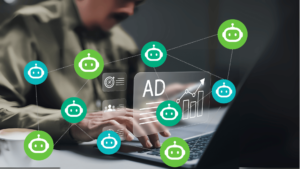Brands today sit on vast reservoirs of customer and business data, securely stored in data lakes and warehouses. Yet, media agencies – tasked with executing their ad campaigns – often have only limited visibility into this information, typically relying on website pixels, periodic data uploads, and platform analytics to track visitor behaviour. The result? A persistent divide between media execution and true business impact.
The Misalignment Between Media Metrics and Business Goals
When measuring campaign success, agencies focus on standard performance indicators: Click-Through Rate (CTR), Cost Per Acquisition (CPA), and Return on Ad Spend (ROAS). While useful, these metrics don’t always align with business-critical KPIs such as market share, gross margin, or customer lifetime value. This disconnect leaves brands in a reactive cycle – reviewing marketing performance retroactively, often on a quarterly basis, to understand its actual contribution to business outcomes.
What if the brands could take a more proactive approach?
AI-Powered Media Intelligence: Bridging the Gap
By integrating their data infrastructure directly with media platforms like Google, Meta, and The Trade Desk via APIs, brands could leverage AI-powered intelligence to bridge the gap between media activity and business impact.
AI agents, machine learning models, and large language models (LLMs) could process campaign data in real time, match it with business outcomes, and surface actionable insights.
This shift would enable brands to:
- Move beyond surface-level metrics to assess media effectiveness in real time.
- Optimise spend dynamically by linking media investment to actual profitability.
- Enhance audience segmentation based on customer lifetime value rather than proxy indicators.
A New Role for Agencies
Historically, media agencies have played an executional role – activating campaigns, buying media, and optimising against platform-specific metrics. They have rarely had direct influence over business strategy.
However, if brands establish an AI-powered intelligence layer between their private data and agency partners, they can generate deeper insights without compromising security. This model enables brands to provide clearer strategic direction to their agencies, ensuring that media investments align with broader business objectives from the outset. Instead of analysing past performance to determine what worked, brands can proactively guide their agency partners with AI-driven recommendations.
The Future: Brand-Owned Intelligence, Agency-Driven Execution
For agencies, this evolution does not diminish their role – it strengthens it. AI acts as the connective tissue between brand data and media execution, allowing agencies to refine their targeting, messaging, and optimisation strategies with greater precision.
Brands, meanwhile, retain full control over their most valuable asset – data – while transforming their marketing approach from reactive to predictive. AI isn’t about replacing agencies; it’s about making the partnership more strategic. By taking control of media intelligence, brands can ensure their marketing investments are measured not just by clicks and conversions, but by their true impact on business growth.



